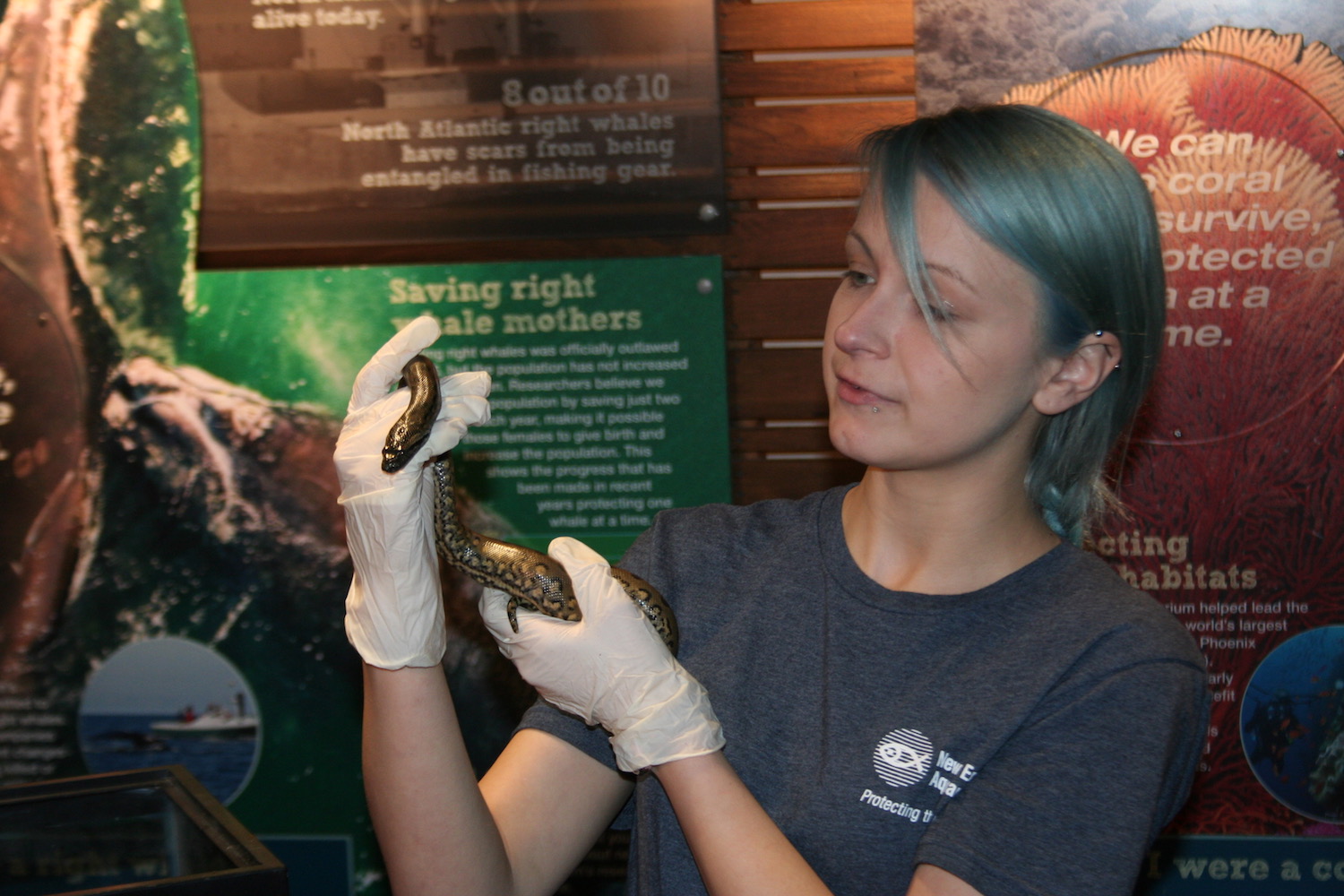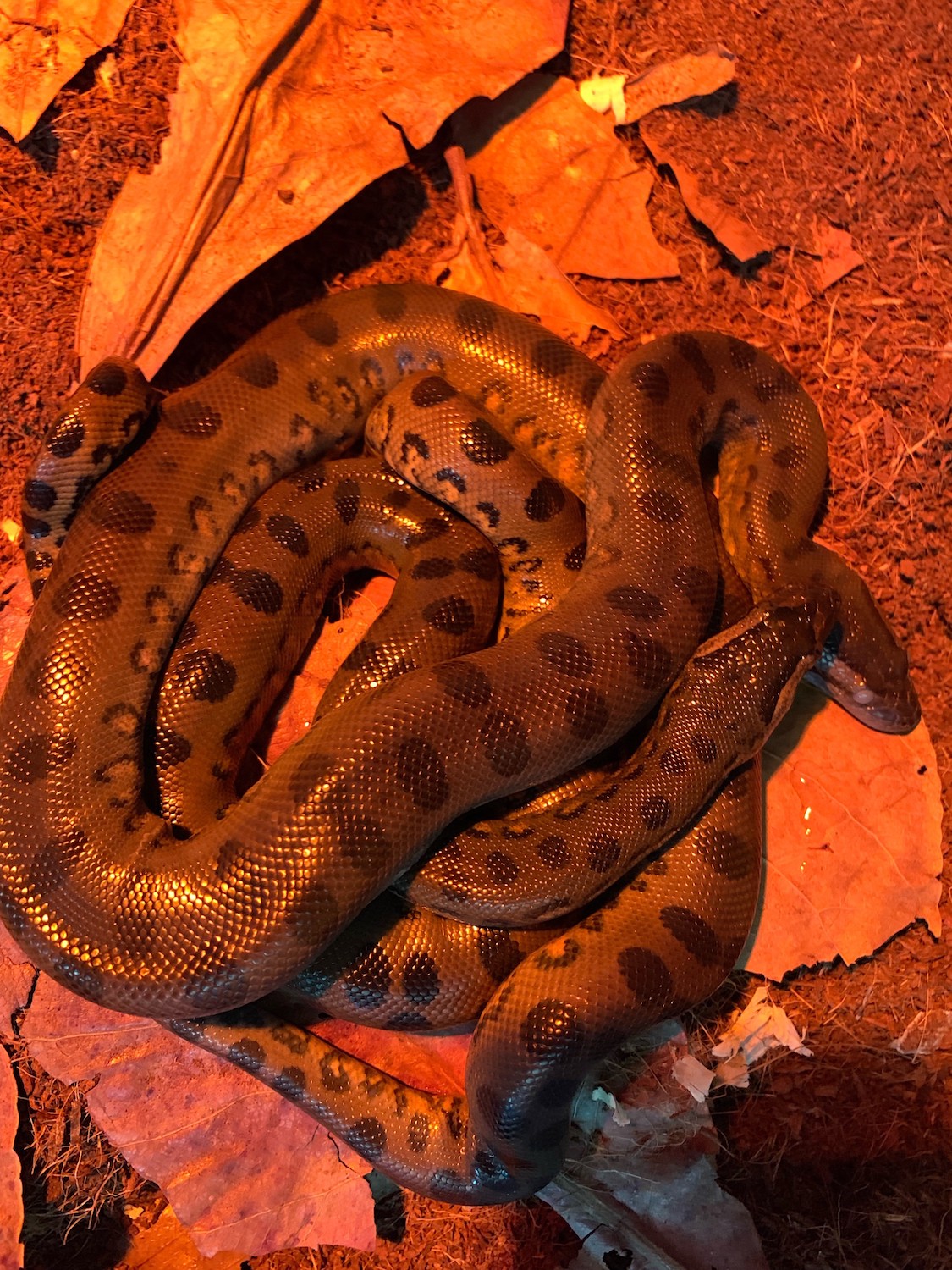Anaconda Mom Gives Birth to Baby Clones, No Male Required

When it comes to making babies, it usually takes two to tango. But Anna, a 10-foot-long (3 meters) anaconda at Boston's New England Aquarium, did it solo. Earlier this year, Anna gave birth to 18 snake babies all by herself, no male snakes required.
Aquarium staff had no idea Anna was pregnant until they saw her during delivery (anacondas don't lay eggs, instead having live births). Immediately, aquarium biologists suspected that Anna had given birth via parthenogenesis, which in Greek means "virgin birth." In other words, Anna's babies contain genetic information only from Anna.
Parthenogenesis doesn't always result in perfect copies. Genes come in pairs — one set from each parent (or in Anna's case, one set from each egg). In some cases of parthenogenesis, these sets of genes get shuffled, so even though the genes are the same in the babies, they're not arranged in the same order, meaning not all offspring are clones. However, in Anna's case, these babies were complete clones. [In Images: Hungry Python Eats Porcupine Whole]
"She's essentially giving birth to herself, oddly enough," David Penning, an assistant professor of biology at Missouri Southern State University, who wasn't involved with Anna's case, told Live Science.
Before aquarium staff could be absolutely sure that Anna had experienced parthenogenesis, they had to double-check that the other snakes in Anna's enclosure were, in fact, female. The animals were. Then, the staff ran DNA tests for the new snake babies. The new snakes were 100% Anna.
In sexual reproduction, a sperm and egg combine, mixing together their genetic information into a brand-new cell, called a zygote. In Anna's case, no sperm was necessary. Instead, all it took was one egg, Penning said. Because an egg contains only half the genetic information needed to form a zygote, it would have had to first clone itself before effectively self-fertilizing. Imagine making a photocopy, then stapling the two identical copies together, Penning said. That's parthenogenesis.
The phenomenon has rarely been documented in snakes or other reptiles. (Just one other instance of anaconda parthenogenesis has been documented, in a U.K. zoo in 2014.) But it may be more common in the wild than scientists assume, Penning said. Most documented cases occur in captivity, when a creature like Anna, isolated from males her whole life, suddenly and unexpectedly produces babies. But in the wild, it's challenging to determine whether a snake is reproducing via sexual reproduction or parthenogenesis, Penning said.
Get the world’s most fascinating discoveries delivered straight to your inbox.
"I don't think we really have a handle on the prevalence of this," he said.
Of Anna's 18 new anacondas, only two survived. Fifteen of the babies were stillborn, and one died a few days later. High mortality rates are common for babies born via parthenogenesis, Penning said. Moreover, this reproductive strategy creates many of the problems seen in inbred populations, including high numbers of harmful genetic mutations.
In wild populations, parthenogenesis can also cause problems when an environmental stressor, such as a new disease or a natural disaster, comes along, Penning said. That's because it's easy to wipe out a whole population when they all have the same genetic traits.
Despite the drawbacks of parthenogenesis, it's a win-win situation when species have the option to switch back and forth between sexual and asexual reproduction. When population levels get low in the wild, "having more copies of yourself isn't that bad of an idea," Penning said.
Anna's babies, now 5 months old and 2 feet (0.6 m) long, aren't ready to be introduced to the public just yet. Aquarium staff are caring for them behind the scenes, handling the snakes daily to get them used to human contact.
- Image Gallery: Snakes of the World
- In Photos: A Tarantula-Eat-Snake World
- Enormous Python Swallows, Vomits Up Even Bigger Python
Originally published on Live Science.

Isobel Whitcomb is a contributing writer for Live Science who covers the environment, animals and health. Her work has appeared in the New York Times, Fatherly, Atlas Obscura, Hakai Magazine and Scholastic's Science World Magazine. Isobel's roots are in science. She studied biology at Scripps College in Claremont, California, while working in two different labs and completing a fellowship at Crater Lake National Park. She completed her master's degree in journalism at NYU's Science, Health, and Environmental Reporting Program. She currently lives in Portland, Oregon.




